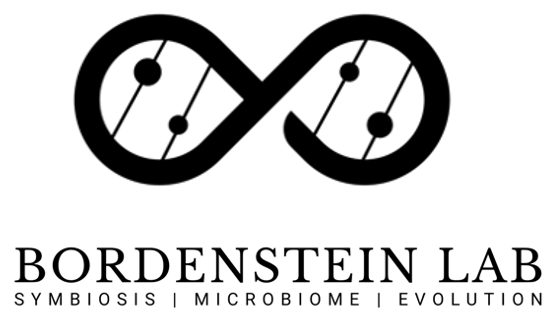Welcome to the Bacteriophage WO Project that seeks knowledge and applications from a common virus of the world’s most widespread animal-associated symbiont: Wolbachia.
Select Media
- How does a virus hijack insect sperm to control disease vectors and pests? Penn State Research News (3/8/24)
- Unraveling genetic mystery next step in Zika and dengue fight Vanderbilt Research News (4/23/18)
- New Tool for Combating Mosquito-Borne Disease: Insect Parasite Genes Vanderbilt Research News (2/27/17)
- What This Itsy Bitsy Virus Took From a Spider CNN report (10/18/16)
Research Summary
Bacterial viruses, or bacteriophages, are among the most abundant biological entities on the planet and harbor the most genes new to biology. Bacteriophages are typically studied in free-living or host-associated bacteria, but are rarely studied in obligate endosymbiotic bacteria that fastidiously live inside the cells of their hosts. Over the past two decades, we developed phage WO of Wolbachia as a model system for phages that live in the cells of animals hosts. We determined how phage WO thrives and functions in this specialized, symbiotic niche and aim to translate this knowledge to various biomedical or vector control applications.
A major area of investigation is how phage WO contributes to Wolbachia‘s cunning parasitism of animal reproduction. These parasitic strategies include a sperm-egg incompatibility termed cytoplasmic incompatibility and the selective killing of male embryos, which both selfishly drive Wolbachia through their arthropod populations since they increase the fitness of females – the transmitting sex for Wolbachia. We discovered the phage WO genes cifA and cifB genes that underpin cytoplasmic incompatibility by Wolbachia, and we aim to utilize these genes to control agricultural pests and mosquito-borne diseases (video link 1 and 2). We also identified the wmk gene that is a candidate for male killing. wmk is a just a few genes away from the cifA and cifB genes in the phage WO Eukaryotic Association Module that is enriched with other genes predicted to interact directly with host eukaryotic biology.
Another topic of major interest is how phage WO lyses its host cells to thrive as a temperate phage. Obligate intracellular baceria like Wolbachia are encompassed by both bacterial and eukaryotic membranes, and therefore phage WO may possess an enigmatic two-fold challenge. Phage WO must not only breach peptidoglycan and permeabilize bacterial membranes, but it also has to cross the eukaryotic membrane(s) that encapsulate the bacteria as well as the eukaryotic cytoplasm or extracellular matrix that they encounter upon bacterial lysis. To the best of our knowledge, no study in virology has assessed the potential for viruses to traverse multiple cellular domains of life. Do these viruses thrive with standard bacteriophage genes or do they utilize a novel strategy that transcends contemporary virus demarcations? Answers to these questions led us to the discovery and characterization of the Eukaryotic Association Module of phage WO that is enriched with eukaryotic-like and eukaryotic-sized genes that may be used to interact with the host arthropod cells and membranes. We are now characterizing the genetic and functional basis of the phage WO lysis genes.
Select Research Publications
- Kaur, R., A. McGarry, J.D. Shropshire, B.A. Leigh, and S.R. Bordenstein (2024) Prophage proteins alter long noncoding RNA and DNA of developing sperm to induce a paternal-effect lethality. Science 383:6687 1111-1117
- Kaur, R., B.A. Leigh, I.T. Ritchie, and S.R. Bordenstein (2022) The Cif proteins from Wolbachia prophage WO modify sperm genome integrity to establish cytoplasmic incompatibility. PLOS Biology 20(5): e3001584. https://doi.org/10.1371/journal.pbio.3001584
- Perlmutter, J.I. , J.E. Meyers, S.R. Bordenstein (2021) A single synonymous nucleotide change impacts the male-killing phenotype of prophage WO gene wmk. eLife 10:e67686
- Shropshire, J.D., J. On, E.M. Layton, H. Zhou, S.R. Bordenstein (2018) One prophage WO Gene Rescues Cytoplasmic Incompatibility in Drosophila melanogaster. Proceedings of the National Academy of Sciences https://doi.org/10.1073/pnas.1800650115
- Lepage, D., J.A. Metcalf, S.R. Bordenstein, J. On, J. Perlmutter, J.D. Shropshire, E. Layton, J. Beckmann, and S.R. Bordenstein (2017) Prophage WO Genes Recapitulate and Enhance Wolbachia-Induced Cytoplasmic Incompatibility. Nature 10.1038/nature21391
- Bordenstein SR and SR Bordenstein (2016) Eukaryotic Association Module in Phage WO Genomes from Wolbachia. Nature Communications 7: 13155.
Select Reviews
- Kaur, R., J.D. Shropshire, K.L. Cross, B. Leigh, A.J. Mansueto, V. Stewart, S.R. Bordenstein, and S.R. Bordenstein (2021) Living in the Endosymbiotic World of Wolbachia: A Centennial Review. Cell Host & Microbe
- Shropshire JD, B Leigh, and SR Bordenstein (2020) Symbiont-Mediated Cytoplasmic Incompatibility: What Have We Learned in 50 Years? eLife
- Metcalf JA and SR Bordenstein (2012) The Case of Endosymbionts: The Complexity of Virus Systems. Current Opinion in Microbiology 15(4): 546-552.
- Kent BN and SR Bordenstein (2010) Phage WO: Lamda of the Endosymbiont World. Trends in Microbiology 18(4):173-81.
